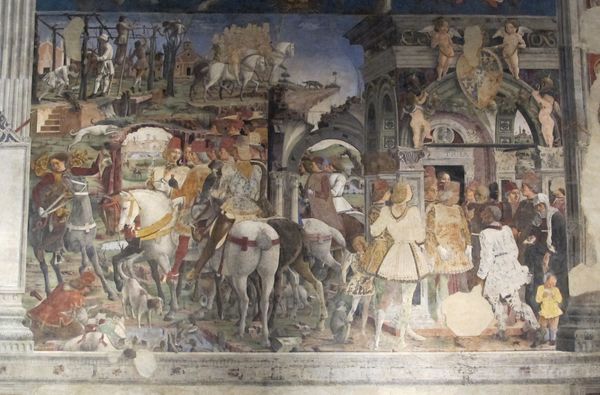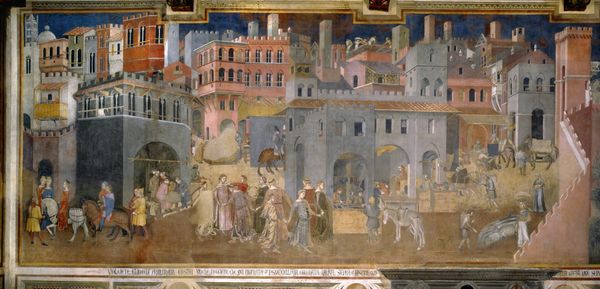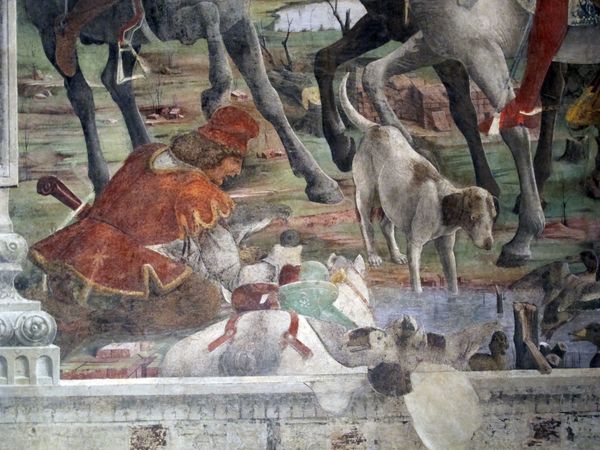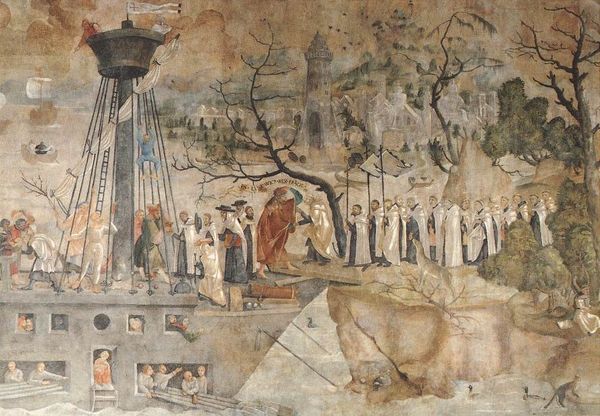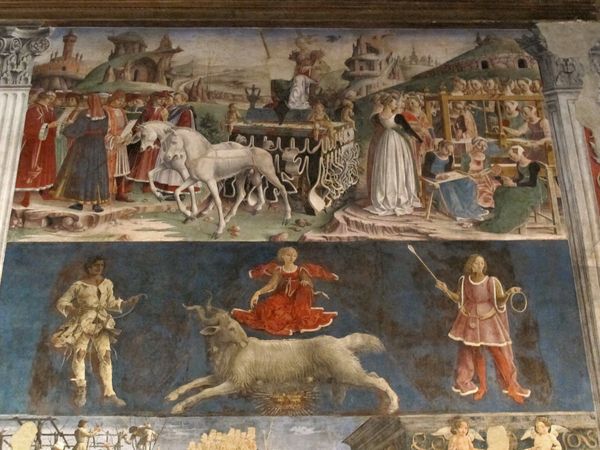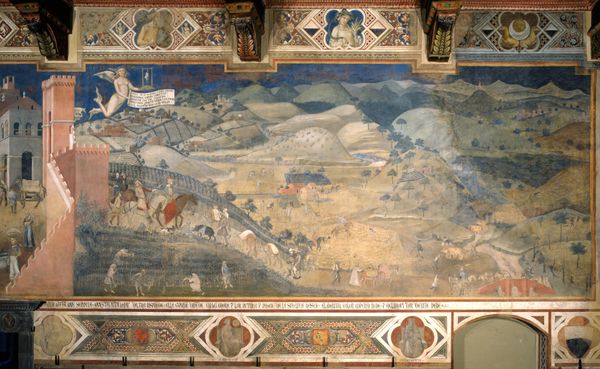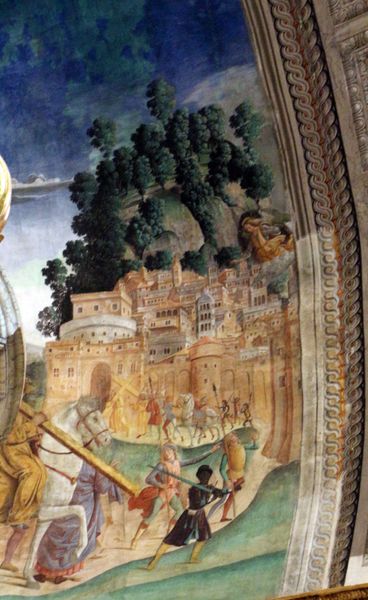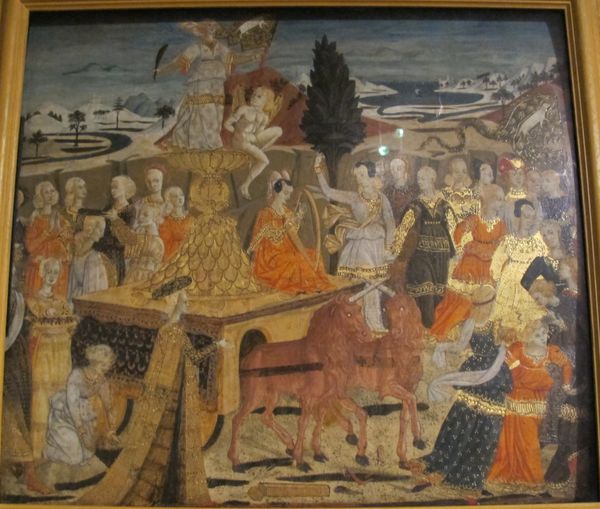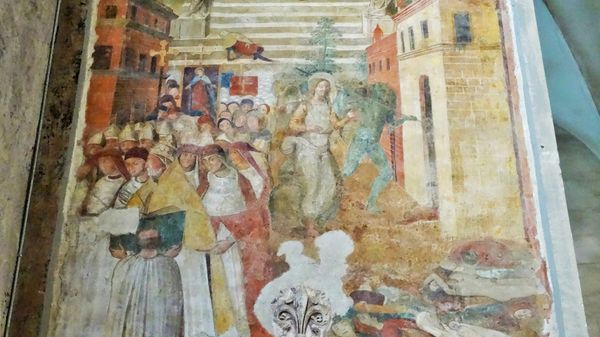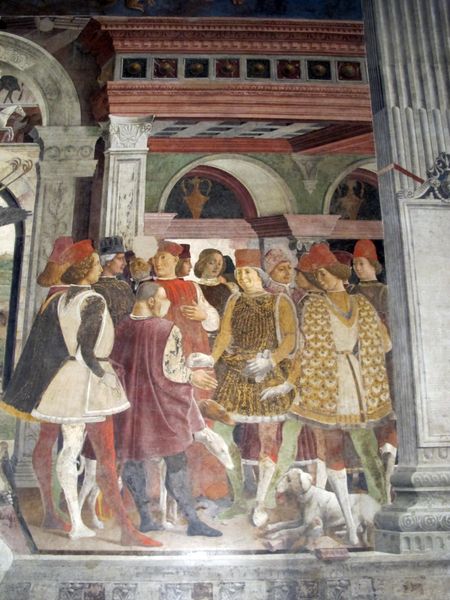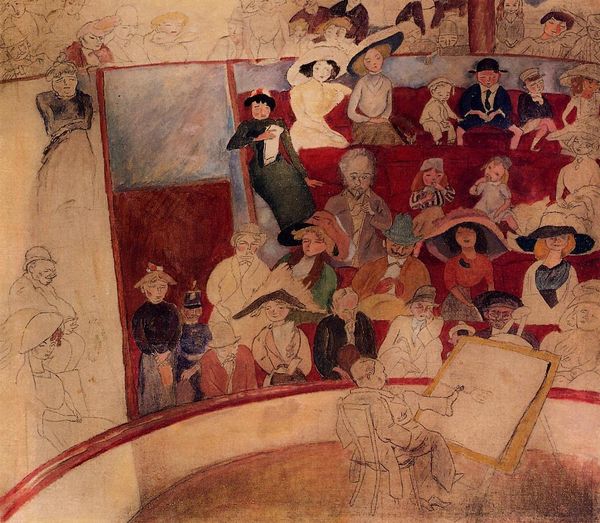
Allegory of March – Triumph of Minerva and Sign of Aries. Frescos in Palazzo Schifanoia (detail) 1470
0:00
0:00
fresco
#
allegory
#
landscape
#
painted
#
figuration
#
fresco
#
oil painting
#
history-painting
#
academic-art
#
italian-renaissance
Copyright: Public domain
Editor: Here we have a segment from the fresco cycle *Allegory of March – Triumph of Minerva and Sign of Aries* by Francesco del Cossa, dating back to 1470. The overall impression is…busy! Figures are layered in such a way that they create different scenes in one. What do you see as you study the visual elements of this piece? Curator: Indeed, the fresco's stratification is a key formal element. Notice how Cossa uses the architectural framework - the arches and pillars - to organize the space, almost like a stage. This divides the narrative into distinct planes. Are you drawn to any particular use of colour? Editor: The reds and blues certainly pop against the more muted greens and browns of what seems to be the landscape. Is there a significance to this? Curator: Absolutely. Cossa’s color choices aren't arbitrary. The vibrant reds, often associated with power and nobility, are strategically placed to guide the viewer’s eye, creating a visual hierarchy within the composition. Think about how that bold hue impacts the overall balance. What shapes seem the most important to the image? Editor: Well, all of the circles or archways repeat and create almost like portals through time, especially where the paint is degraded. It almost gives this fresco more layers to explore. Curator: Precisely. Consider how those curving forms contrast with the strict linearity of the architecture. The artist uses geometric tension to invite movement, compelling our eyes to travel across the planes of action. What happens when the architecture breaks? Does it enhance the composition, or hinder it? Editor: That’s a really interesting point; if all of these elements weren’t intentionally placed, this could just be happenstance. I suppose the answer is yes, it makes a visually rich work. Thanks for providing me with such insight. Curator: And thank you for considering all of the facets. By examining color, geometry, and form we gain entry into the mechanics of seeing and understanding.
Comments
No comments
Be the first to comment and join the conversation on the ultimate creative platform.
